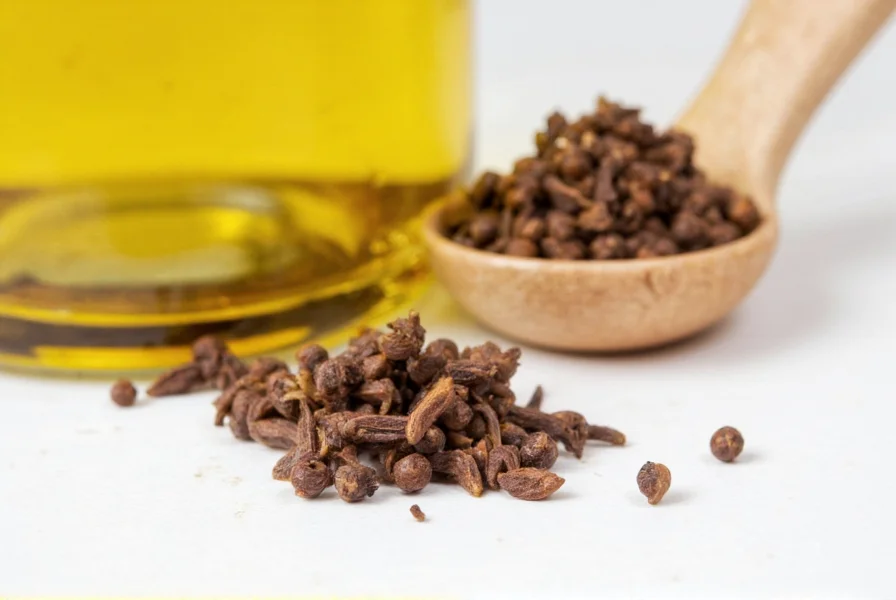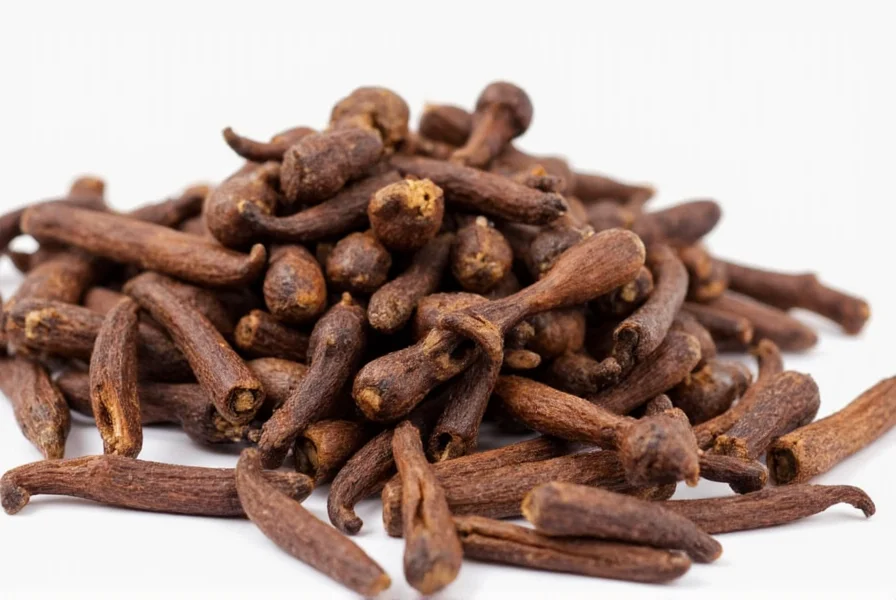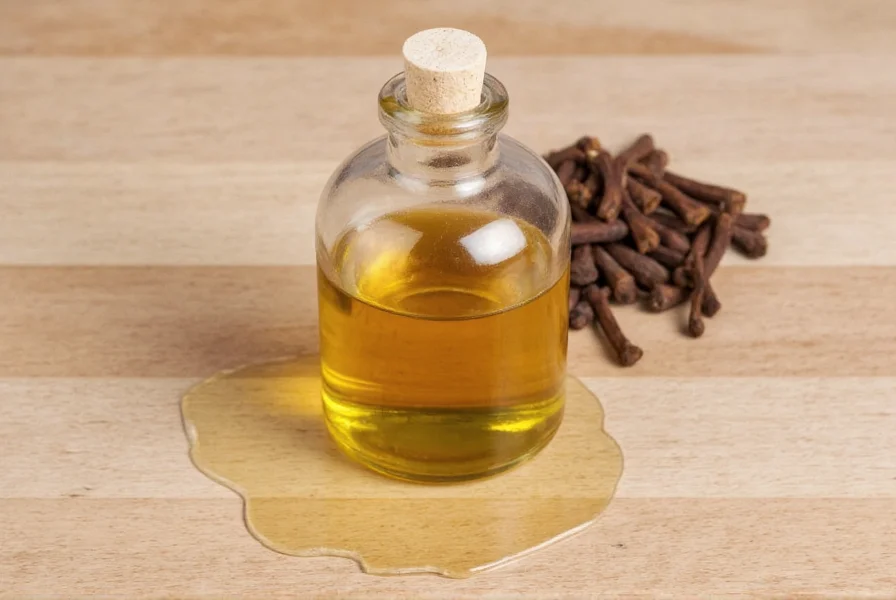Making clove oil at home is a straightforward process that puts you in control of quality and purity. Whether you need immediate relief from dental discomfort or want a natural remedy for your home apothecary, this guide provides safe, effective methods anyone can follow with basic kitchen supplies.
Why Make Your Own Clove Oil
Commercial clove oil often contains additives or has been processed at high temperatures that degrade beneficial compounds. When you make homemade clove oil for toothache relief, you control:
- The quality of organic cloves used
- The carrier oil selection (olive, coconut, or almond oil)
- The extraction method that preserves maximum eugenol content
- The freshness of your final product
Creating your own natural clove oil extraction method costs significantly less than purchasing therapeutic-grade essential oil while ensuring no synthetic additives.
Understanding Clove Oil Components
Clove oil's effectiveness comes primarily from eugenol, which typically comprises 70-90% of the oil's composition. This compound provides:
- Powerful analgesic properties for dental pain
- Antimicrobial effects against oral pathogens
- Anti-inflammatory benefits
Commercial steam-distilled clove oil reaches higher concentrations (up to 90% eugenol), while making clove oil with olive oil typically yields 15-25% eugenol—still effective for most home applications when properly prepared.
Materials Needed for DIY Clove Oil
| Item | Recommended Type | Why It Matters |
|---|---|---|
| Cloves | Whole dried cloves (not ground) | Higher oil content and easier to strain |
| Carrier Oil | Organic olive, coconut, or almond oil | Neutral flavor and good solvent properties |
| Container | Dark glass jar with tight lid | Protects from light degradation |
| Strainer | Cheesecloth or fine mesh strainer | Removes all clove particles |
Step-by-Step Clove Oil Preparation
Cold Infusion Method (Recommended)
- Crush 1 cup of whole cloves slightly with a mortar and pestle to break cell walls
- Place cloves in a clean glass jar and cover with 2 cups of carrier oil
- Seal tightly and store in a dark place at room temperature
- Shake gently once daily for 1-2 weeks
- Strain through cheesecloth into a clean dark glass bottle
- Store in a cool, dark place away from heat sources

Warm Infusion Method (Faster Alternative)
- Combine 1 cup crushed cloves with 2 cups carrier oil in a double boiler
- Heat on lowest setting for 2-3 hours (do not exceed 140°F/60°C)
- Remove from heat and let cool completely
- Strain through multiple layers of cheesecloth
- Bottle immediately in dark glass container
The clove oil infusion technique using cold extraction preserves more volatile compounds but takes longer. Warm extraction works faster but risks degrading some beneficial components if temperatures exceed 140°F.
Safety Considerations for Homemade Clove Oil
While making clove oil for tooth infection home remedy applications, remember:
- Always dilute before use (1 part clove oil to 5 parts carrier oil for topical application)
- Perform a patch test on your skin before first use
- Never apply undiluted clove oil directly to gums or skin
- Discard if you notice any mold, cloudiness, or off smells
- Keep away from children and pets
Improperly made clove oil can cause chemical burns or allergic reactions. The best carrier oil for clove oil is one with neutral properties like fractionated coconut oil, which won't degrade the active compounds.
Troubleshooting Common Issues
Weak oil extraction: Use fresher cloves (check for strong aroma) and ensure they're properly crushed to release oils.
Mold concerns: Always use completely dry cloves and sterilized containers. If mold appears, discard immediately.
Separation issues: This is normal with natural oils. Shake gently before each use.
Short shelf life: Properly stored how long does homemade clove oil last question is answered by storage conditions—typically 6-12 months in dark glass away from heat.
Effective Usage Guidelines
For dental applications:
- Dilute 3-4 drops of your homemade clove oil in 1 teaspoon carrier oil
- Apply with cotton swab directly to affected tooth or gum
- Use no more than 2-3 times daily for temporary relief
- Consult a dentist for persistent pain
For topical applications:
- Always dilute to 1-5% concentration (1-5 drops per teaspoon carrier oil)
- Avoid broken skin or mucous membranes
- Discontinue use if irritation occurs

Maximizing Your Clove Oil's Effectiveness
For the most potent diy clove essential oil, use these professional tips:
- Choose cloves with high eugenol content (Indonesian cloves typically have 80-85%)
- Use organic carrier oils to avoid pesticide residues
- Store finished oil in amber or cobalt glass bottles
- Label with preparation date for freshness tracking
- Consider adding vitamin E oil (1-2 drops per ounce) as a natural preservative
Understanding how to use clove oil for dental pain properly ensures you get the maximum benefit while minimizing risks. Remember that while effective for temporary relief, clove oil doesn't treat the underlying cause of dental issues.
How long does it take to make clove oil at home?
The cold infusion method requires 1-2 weeks for optimal extraction, while the warm method works in 2-3 hours. For the highest quality how to make clove oil at home results, the cold method is recommended as it preserves more beneficial compounds without heat degradation.
Can I use ground cloves instead of whole cloves?
While possible, whole cloves work significantly better for making clove oil with olive oil. Ground cloves create a cloudy product that's difficult to strain properly and may spoil faster. Whole cloves provide better oil extraction and easier separation from the carrier oil.
What's the best carrier oil for clove oil extraction?
Fractionated coconut oil is ideal as it's odorless, has excellent solvent properties, and remains liquid at room temperature. Olive oil works well too but has a stronger flavor. The best carrier oil for clove oil should be neutral, stable, and food-grade for safe topical or dental use.
How should I store homemade clove oil?
Store your how long does homemade clove oil last product in a dark glass bottle (amber or cobalt) in a cool, dark place away from heat sources. Properly stored, it should maintain potency for 6-12 months. Always label with the preparation date and check for any off smells or cloudiness before use.
Is homemade clove oil as effective as store-bought?
Commercial steam-distilled clove oil has higher eugenol concentration (70-90%), while diy clove essential oil typically reaches 15-25% eugenol. For most home applications like temporary toothache relief, properly made homemade oil is effective when used correctly. However, for therapeutic applications requiring precise dosing, professional-grade oil may be preferable.











 浙公网安备
33010002000092号
浙公网安备
33010002000092号 浙B2-20120091-4
浙B2-20120091-4